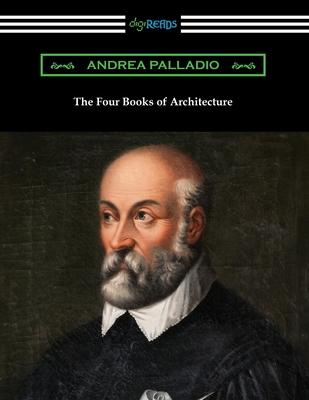First published in four volumes in Venice in 1570, "The Four Books of Architecture" is the important architectural treatise by the famed Italian architect Andrea Palladio. Often considered to be one of the most important and influential figures in the history of architecture, Palladio's designs in the city of Vicenza are designated a World Heritage Site and have inspired countless architects and artists. Palladio's seminal work was first published in English in 1663 and remains widely read and studied. The four volumes of Palladio's work cover every important aspect of architecture and design. The first book examines materials, techniques, elements, and defines the five classic orders, Tuscan, Doric, Ionic, Corinthian and composite, and all their respective parts. The second part explores the design of private residences, such as city townhouses and country estates. The third book addresses city planning issues, such as streets, public spaces, and places of worship. The fourth and final book describes the design of specific Roman temples and structures, including detailed measurements, both of buildings that were still standing and those that could be found only in ruin. Palladio's classic work is an essential addition to the library of everyone who studies and appreciates architecture and design. This edition is printed on premium acid-free paper and follows the translation of Isaac Ware.

First published in four volumes in Venice in 1570, "The Four Books of Architecture" is the important architectural treatise by the famed Italian architect Andrea Palladio. Often considered to be one of the most important and influential figures in the history of architecture, Palladio's designs in the city of Vicenza are designated a World Heritage Site and have inspired countless architects and artists. Palladio's seminal work was first published in English in 1663 and remains widely read and studied. The four volumes of Palladio's work cover every important aspect of architecture and design. The first book examines materials, techniques, elements, and defines the five classic orders, Tuscan, Doric, Ionic, Corinthian and composite, and all their respective parts. The second part explores the design of private residences, such as city townhouses and country estates. The third book addresses city planning issues, such as streets, public spaces, and places of worship. The fourth and final book describes the design of specific Roman temples and structures, including detailed measurements, both of buildings that were still standing and those that could be found only in ruin. Palladio's classic work is an essential addition to the library of everyone who studies and appreciates architecture and design. This edition is printed on premium acid-free paper and follows the translation of Isaac Ware.